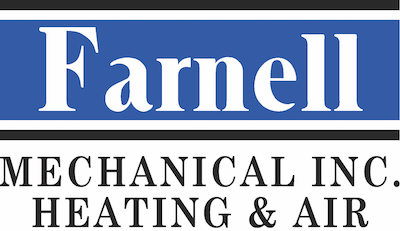
If you’re thinking over air conditioner installation in Auburn and Opelika, you should also be considering your new air conditioner’s SEER rating.
SEER stands for Seasonal Energy Efficiency Rating. In summary, it examines how effective your air conditioner is at transforming electricity into cold air. A greater number indicates your air conditioner is more efficient, which is great for your electrical expenses.
However, there are a lot of differing solutions to choose from for air conditioners. And a greater SEER number usually involves a higher cost. So, how can you find out which one is right for your residence?
At Farnell Mechanical, Inc., we offer a free, no-pressure home comfort analysis. You can get one by contacting us at 334-524-2458. Our knowledgeable air conditioner installers will collaborate with you to help you pick the right air conditioner for your needs. Plus, they’ll also give you a free, no-obligation estimate.
In the meantime, let’s go over SEER ratings and how they can affect your loved ones’ comfort. And your electrical bills.
Does SEER Rating Really Matter?
In 2016, the federal government created new SEER criteria. New air conditioners are mandated at least 13 SEER in the northernmost United States and 14 SEER in the southeast and southwest. If you’re unsure when you had your air conditioner replaced or what its SEER rating is, you can locate the sticker on the condenser outside your house. If you can’t see the sticker, you can give us a call at 334-524-2458 for support.
If your air conditioner was put in before that date, it’s probably much less efficient. Air conditioning technology has quickly changed in the past several years, with big breakthroughs in energy efficiency and smart home capability. Connecting your new air conditioner with a smart thermostat could help you conserve more on cooling costs, because the thermostat can intuitively regulate your temperature settings when you’re gone.
If your existing air conditioner has a SEER rating between 8 and 10, adding a 14-SEER system could save you around 30–50% on annual utility costs. Your savings are tied to your air conditioner size and your temperature settings.
Is the highest SEER Rating the Best?
An air conditioner with a higher SEER rating will be more efficient at using electricity for cooling. The most efficient ones, which can go as great as 26 SEER, carry ENERGY STAR® endorsement. This endorsement means the air conditioner meets EPA requirements for energy savings and environmental conservation.
While ENERGY STAR air conditioners are frequently more expensive, you’ll normally get the difference back over the years through reduced utility expenses. These air conditioners, which are typically rated 16 SEER and higher, need about 8% less electricity than other new systems, according to ENERGY STAR.
One of the biggest differences between a 14 SEER and 16 SEER is variable-speed technology. A variable-speed air conditioner can run at a number of speeds. This refines comfort for your family while keeping your cooling bills down. It can also keep temperatures and humidity more consistent, since it can run for longer without requiring a lot more power.
When buying a variable-speed air conditioner, you’ll have to ensure that your furnace or air handler is compatible. This is because your air conditioner uses this unit’s blower to distribute chilled air around your house. Furnaces only run for about 20 years, so if yours is around that mark, we advise getting furnace installation at the same time so you can get all the benefits of your variable-speed air conditioner.
When you’re prepared to replace your air conditioner, the cooling specialists at Farnell Mechanical, Inc. are available to help. Reach us at 334-524-2458 to request your free home comfort analysis now.
